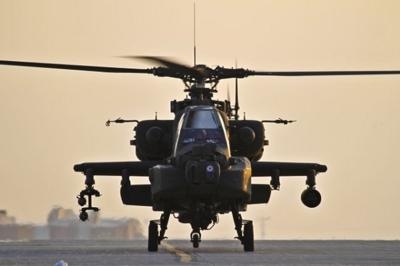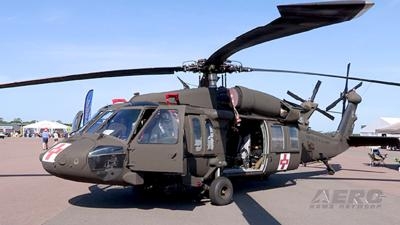Top General Expects “Immediate Results”
Following his 28 April aviation safety stand-down order, U.S. Army Chief of Staff General James McConville set forth he expects the service’s helicopters to be airborne in a matter of days.

Speaking before the Senate Appropriations Committee’s defense subpanel on Tuesday, 02 May, McConville explained he had directed aviation units to pause all flight operations for purpose of reviewing all procedures—from maintenance and safety protocols to training plans and basic flight mechanics. A career aviation officer qualified in the majority of the Army’s rotary-wing inventory, General McConville asserted he’d instructed the service’s top commanders to approach the compulsory stand-down with a “crawl, walk, run” ethos.
“Realize that this is a very dangerous business and unlike maybe operating a vehicle close to a curb, with aviation if you make a mistake or something happens it can be very catastrophic, and we need to bring that safety philosophy … back into the cockpits and make sure we're able to do that,” McConville advised Senate appropriators during a hearing on the Army’s proposed $185.5-billion fiscal 2024 budget. “I think it's going to be over in the next couple of days,” the general added, “and we're expecting immediate results.”
McConville ordered the safety stand-down in the aftermath of a 27 April accident in which two AH-64 Apache attack helicopters assigned to the U.S. Army’s 1st Attack Reconnaissance Battalion, 25th Aviation Regiment went down in the vicinity of Healy, Alaska.
The helicopters, each crewed by two Army Aviators, collided while returning to Fairbanks, Alaska’s Fort Wainwright after a training flight. The accident claimed the lives of Chief Warrant Officer 3 Christopher Robert Eramo, 39, of Oneonta, New York; Chief Warrant Officer 2 Kyle McKenna, 28, of Colorado Springs, Colorado; and Warrant Officer 1 Stewart Duane Wayment, 32, of North Logan, Utah. A fourth soldier, whose name has not been publicly released, was injured in the crash.
The accident was the third suffered by Alaska-based U.S. Army helicopter units this year, and one of numerous fatal rotary-wing mishaps to befall the service in 2023.
On 05 February, two soldiers were killed in a U.S. Army AH-64D rollover accident in Talkeetna, Alaska, an historic hamlet 67-nautical-miles north of Anchorage.
On 15 February, two service-members perished when a Black Hawk helicopter assigned to the Tennessee National Guard went down during a training flight just outside of Huntsville, Alabama. The accident, which occurred at approximately 15:00 EST, saw the aircraft impact ground and catch fire along Alabama’s Highway 53. No ground injuries were reported.
On 29 March—less than one month prior to the Healy, Alaska AH-64 collision, nine soldiers of the Army’s famed 101st Airborne Division lost their lives when a pair of UH-60 Black Hawk helicopters collided during a nighttime medical evacuation drill near Fort Campbell, Kentucky.
Citing the spate of recent accidents, senators in attendance at the 02 May Appropriations Committee meeting questioned the combat readiness of the Army’s aviation forces.

Senator Lisa Murkowski (Republican, Alaska) told Army leaders she hoped the stand-down was “not just a messaging tool.” While Senator Jon Tester (Democrat, Montana) noted aviation mishaps had cost the Army some $600-million since 2020.
U.S. Army Secretary Christine Wormuth, who testified alongside General McConville, advised the company of senators that the service’s 2024 budget proposal fully funded pilot flight hours, as had budgets passed during the two preceding fiscal years. Wormuth qualified her statement, however, contending Army aviation has faced less conspicuous hardships, including parts shortages and maintenance issues by which aircraft needed for training operations were repeatedly and protractedly grounded.
“I think one of the things that we need to look at is: are our pilots actually getting enough flying hours?” Wormuth opined, adding: “To do that, we've got to make sure that the aircraft are ready to fly. And so there's sort of a lot of pieces that fit together in that, but we are definitely investing fully in that, in my view.”
 NTSB Prelim: Piper PA-23
NTSB Prelim: Piper PA-23 ANN FAQ: Submit a News Story!
ANN FAQ: Submit a News Story! Classic Aero-TV: One Mans Vietnam
Classic Aero-TV: One Mans Vietnam ANN's Daily Aero-Linx (07.03.25)
ANN's Daily Aero-Linx (07.03.25) ANN's Daily Aero-Term (07.03.25): High Speed Taxiway
ANN's Daily Aero-Term (07.03.25): High Speed Taxiway




